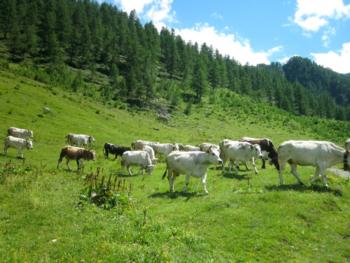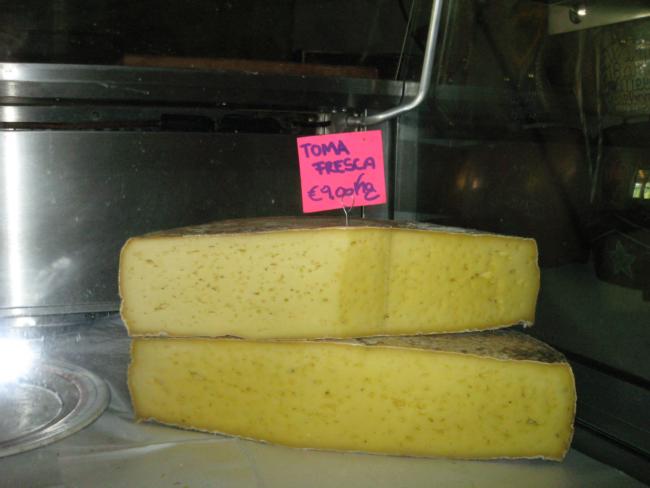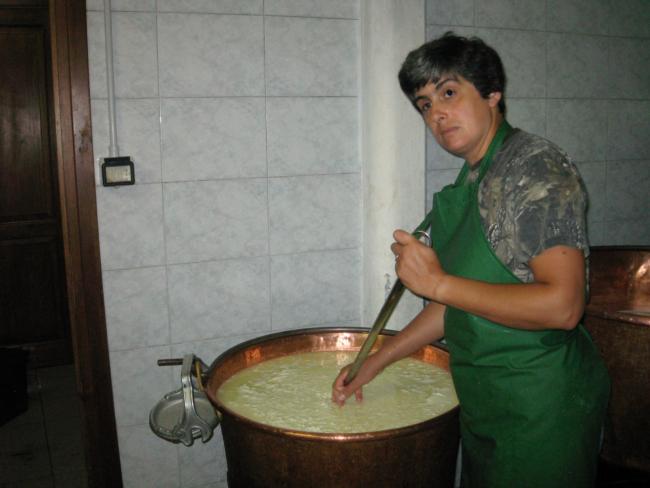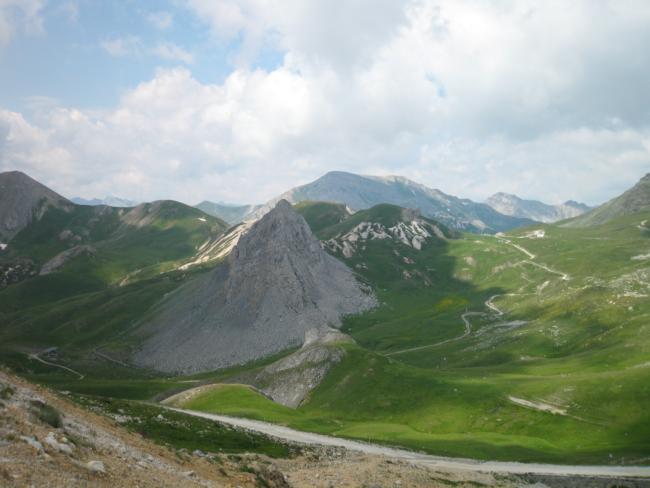Marin's Cheese Making Heritage

In the Alps and other mountainous regions in Europe, summer cheese making from the milk of dairy animals that graze on green pastures is a celebrated part of the annual dairy cycle. In the Italian Alps and other areas where the transhumance is still practiced, production of typical cheeses is a tradition that is in danger of dying out rather than a new way of diversifying farm income. Here, seasonal cheeses are often specific to a certain type of pasture or bloom time of a particular pasture plant.
Transhumance is an ancient practice where people move seasonally with their livestock between winter and summer pastures. Families live with their animals in the valley floor during harsh winter months, moving to mountain pastures during summer. Transhumance is still practiced in some parts of the European alps, the result of which are very specialized and seasonal cheeses.
Just like in Marin, as elderly Alpine ranchers pass on, sometimes the younger generations are less eager to take on the difficult life and low profits of ranch life. American and Italian ranchers alike share a common struggle to stay on their land, be able to make a living and to pass the tradition on to the next generation. Maintaining the transhumance lifestyle is especially difficult, as ranch families live part of each year in remote mountainous areas in often primitive housing where family members must spend long days alone herding their flocks. This lifestyle, however, is essential to the time honored European tradition of summer cheese making from grass fed dairy animals.
While Marin County cheese makers are able to command relatively high prices for their artisan cheeses due to their close proximity to a high-income urban population, many cheese makers in the Italian Alps are only able to sell their cheeses for a small fraction of the prices that Marin cheeses command. However, in the Italian Alps, greater recognition by government and the general public of the essential role that ranching plays in maintaining both ecological and cultural values in mountain communities has resulted in government funding of the alpeggi, the Alpine ranches that have been occupied seasonally for centuries.

In northern Italy, families that still practice the transhumance live in the valley floors during harsh winter months, feeding their animals dry forage and silage as is commonly done in our local dairies. But come snow melt, the animals, which commonly include cows, sheep and goats, are either driven on foot or trucked to the alpeggi.
On the alpeggi, nearly all of which include cheese making rooms and storage cellars or caves, methods have not changed much over the centuries. For example, rather than being made in expensive, high tech cheese vats, milk is often heated in ancient copper kettles over a low flame. Similarly, in the most traditional operations, if cheese is not made immediately after milking, milk is stored in underground caves, cooled by subterranean streams.

Although cheese making technology on the alpeggi may be simpler than that in Marin County, knowledge about chemical constituents of cheeses made from different pasture types is very sophisticated thanks to scientists from the University of Turin. Researchers found that milk and cheese derived from cows that were grazed on clover-dominated pastures have different fatty acid profiles than products from fescue-dominated pastures. Fescue pasture milk and cheeses contain more α-linolenic acid, an essential omega 3 fatty acid commonly found in seeds and nuts.
Mixed-milk cheeses are common in Europe, where ranchers often raise multiple species of livestock. In Marin, obtaining milk from more than one species of animal has been difficult for cheese makers, due to licensing differences for cow versus goat or sheep dairies, as well as the fact that virtually all cow dairies have milk contracts with large dairy companies that maintain exclusive rights. Establishment of small, grass-based dairies specifically for providing milk to cheese makers would allow greater production of mixed-milk cheeses. Seasonal differences in Marin’s pasture quality and composition could be explored and utilized to make special, seasonal cheeses.
Marin cheese makers are fortunate to have access to the latest technology in cheese production and are lucky to be near a high-income urban population that can’t get enough of their products. But despite the low price of cheese and the rugged life in the alpeggi, the stunning scenery in the Italian Alps can’t be beat!

By Lisa Bush, Marin County Agricultural Ombudsman and Range Management Specialist, who spends part of each year in her second home in Italy where she has befriended grassland ecologists and enjoys visiting farms and ranches. Lisa has found that American and Italian ranch families face many of the same issues including increasing regulations and challenges with intergenerational transitions.



